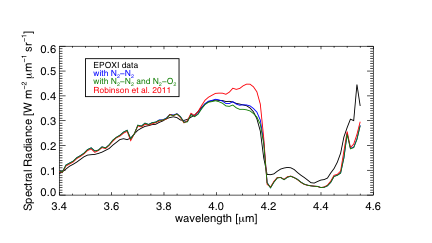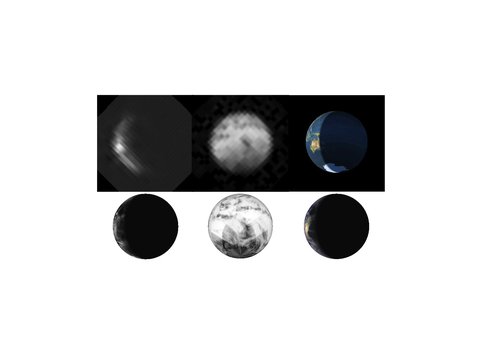2013 Annual Science Report
 VPL at University of Washington
Reporting | SEP 2012 – AUG 2013
VPL at University of Washington
Reporting | SEP 2012 – AUG 2013
Earth as an Extrasolar Planet
Project Summary
Earth is our only example of a habitable planet, or a planet capable of maintaining liquid water on its surface. As a result, Earth serves as the archetypal habitable world in conceptual studies of future exoplanet characterization missions, or in studies of techniques for the remote characterization of potentially habitable exoplanets. We seek to accurately simulate the time-, phase-, and wavelength-dependent appearance of the Pale Blue Dot, and to use these models to understand how to best recognize and characterize potentially Earth-like exoplanets.
Project Progress
In this task we use observations of our home planet to explore the detectability of signs of habitability and life on terrestrial planets. At the center of this development is the VPL 3-D spectral Earth model, which is a community tool that simulates the time-dependent disk-integrated spectrum of our planet from any arbitrary viewing geometry. In collaboration with LCROSS mission scientists, this year Robinson, Meadows and Sparks performed a comparison of predictions from the VPL 3-D spectral Earth model with UV to infrared spectra of the Earth obtained by the LCROSS mission (Robinson et al., submitted). This comparison was used to validate our predictions of the detectability and spectral dependence of glint from the Earth’s ocean, by comparing the model predictions of the Earth’s brightness at different phases with the data taken by LCROSS. This data-model comparison also revealed an error in the spectral calibration of data from the LCROSS mission, which we were able to help correct. We also discussed using the 255nm UV Hartley band of ozone, one of the strongest spectral features in the Earth’s spectrum, as a biosignature. This project was made possible by collaboration between the VPL, NASA/LCROSS mission scientists, and the Space Telescope Science Institute (STScI).
The updated model has been used to demonstrate that N2-N2 CIA is required to fit the spectral region near 4.1μm in Earth spectra taken by the NASA/EPOXI mission (Schwieterman et al., in prep). Detection of N2-N2 CIA in a planet’s spectrum can help constrain surface pressure and thus surface habitability. This year we also completed spectral libraries of the Earth’s appearance through a Lunar month as a simulated dataset for studies of observations of the Earth from a lunar platform.

-
PROJECT INVESTIGATORS:
-
PROJECT MEMBERS:
David Crisp
Co-Investigator
Amit Misra
Co-Investigator
Edward Schwieterman
Co-Investigator
William Sparks
Co-Investigator
-
RELATED OBJECTIVES:
Objective 1.2
Indirect and direct astronomical observations of extrasolar habitable planets.
Objective 7.2
Biosignatures to be sought in nearby planetary systems


